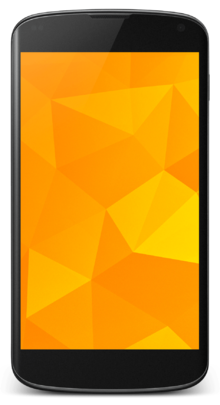Android App Development
COURTESY :- vrindawan.in
Wikipedia
Android software development is the process by which applications are created for devices running the Android operating system. Google states that “Android apps can be written using Kotlin, Java, and C++ languages” using the Android software development kit (SDK), while using other languages is also possible. All non-Java virtual machine (JVM) languages, such as Go, JavaScript, C, C++ or assembly, need the help of JVM language code, that may be supplied by tools, likely with restricted API support. Some programming languages and tools allow cross-platform app support (i.e. for both Android and iOS). Third party tools, development environments, and language support have also continued to evolve and expand since the initial SDK was released in 2008. The official Android app distribution mechanism to end users is Google Play; it also allows staged gradual app release, as well as distribution of pre-release app versions to testers.

The Android software development kit (SDK) includes a comprehensive set of development tools. The Android SDK Platform Tools are a separately downloadable subset of the full SDK, consisting of command-line tools such as adb and fastboot. The Android Debug Bridge (ADB) is a tool to run commands on a connected Android device. Fastboot is a protocol used for flashing filesystems. Code written in C/C++ can be compiled to ARM, or x86 native code (or their 64-bit variants) using the Android Native Development Kit (NDK).
The Android 3.1 platform (also backported to Android 2.3.4) introduces Android Open Accessory support, which allows external USB hardware (an Android USB accessory) to interact with an Android-powered device in a special “accessory” mode. When an Android-powered device is in accessory mode, the connected accessory acts as the USB host (powers the bus and enumerates devices) and the Android-powered device acts as the USB device. Android USB accessories are specifically designed to attach to Android-powered devices and adhere to a simple protocol (Android accessory protocol) that allows them to detect Android-powered devices that support accessory mode.
Mobile app development is the act or process by which a mobile app is developed for mobile devices, such as personal digital assistants, enterprise digital assistants or mobile phones. These software applications are designed to run on mobile devices, such as a smartphone or tablet computer. These applications can be pre-installed on phones during manufacturing platforms, or delivered as web applications using server-side or client-side processing (e.g., JavaScript) to provide an “application-like” experience within a web browser. Application software developers also must consider a long array of screen sizes, hardware specifications, and configurations because of intense competition in mobile software and changes within each of the platforms. Mobile app development has been steadily growing, in revenues and jobs created. A 2013 analyst report estimates there are 529,000 direct app economy jobs within the EU then 28 members (including the UK), 60 percent of which are mobile app developers.

As part of the development process, mobile user interface (UI) design is also essential in the creation of mobile apps. Mobile UI considers constraints, contexts, screen, input, and mobility as outlines for design. The user is often the focus of interaction with their device, and the interface entails components of both hardware and software. User input allows for the users to manipulate a system, and device’s output allows the system to indicate the effects of the users’ manipulation. Mobile UI design constraints include limited attention and form factors, such as a mobile device’s screen size for a user’s hand(s). Mobile UI contexts signal cues from user activity, such as location and scheduling that can be shown from user interactions within a mobile app. Overall, mobile UI design’s goal is mainly for an understandable, user-friendly interface. Functionality is supported by mobile enterprise application platforms or integrated development environments (IDEs).
Mobile UIs, or front-ends, rely on mobile back-ends to support access to enterprise systems. The mobile back-end facilitates data routing, security, authentication, authorization, working off-line, and service orchestration. This functionality is supported by a mix of middleware components including mobile app server, mobile backend as a service (MBaaS), and service-oriented architecture (SOA) infrastructure.
The platform organizations needed to develop, deploy and manage mobile apps are made from many components and tools which allow a developer to write, test and deploy applications into the target platform environment.
Front-end development tools are focused on the user interface and user experience (UI-UX) and provide the following abilities:
- UI design tools
- SDKs to access device features
- Cross-platform accommodations/support
